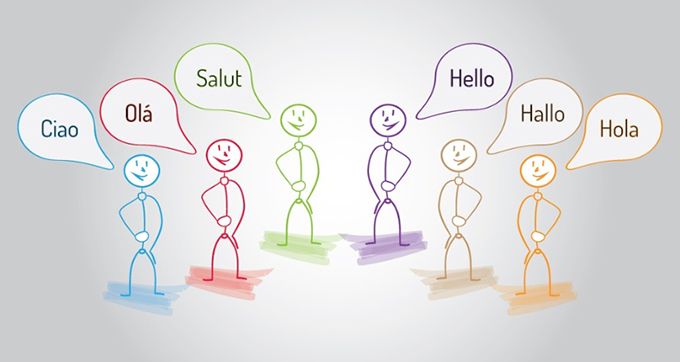
Imagine it’s your first day on the job. Easy enough—we’ve all been there. Remember how nervous you were when you started at your last job? Now, imagine everyone around you is speaking a language you’re still not very comfortable using. You might catch a word here or there, but you’re missing the majority of the communications on your first day. This is the reality for many American workers with Limited English Proficiency (LEP)—they’re just left out of the loop from day one due to a language barrier.
Even though many positions require a certain degree of proficiency with English, our increasingly diverse workforces are making language barriers more common. According to a Rosetta Stone survey, about 90% of businesses encounter language barriers on a regular basis. While more diverse workforces have incredible benefits for companies, there are some challenges that come along with them—such as employee engagement. Engagement depends largely on communication and inclusion, which can be difficult to achieve when there is a language barrier. So what can you do to make sure everyone in your organization feels included and engaged? Try implementing these tips.
Sponsor Language Training
Of course, in an ideal world, all your employees would understand the same language and be able to fully engage in that language. Sponsoring language training will help your employees advance their career and empower them to communicate with their colleagues and leaders, while giving them the potential to advance and make even greater contributions. Whether this means purchasing language software or paying for classes, helping your employees improve their English skills benefits everyone.
Use Diversity Training
Not everyone is going to offer a welcoming environment to increased diversity without some training and assistance, unfortunately. Increasing your team’s cultural competence may require that you offer diversity training, to make sure everyone is on the same page. One industry that is making an effort to increase cultural competence is healthcare. 64.5% of hospitals have all their employees to go through mandatory diversity training, reducing culture clashes and feelings of isolation in employees who are part of minority groups. Diversity training can help improve collaboration and morale among employees, which leads to better productivity.
Offer Multilingual Communications
Of course, if you have employees who speak several languages, it’s not always realistic to have translations of all your company materials in every language. However, if you have several employees with limited English proficiency, offering multilingual communications or the services of an interpreter can be a worthwhile investment. Some telephonic interpretation services charge by the minute, so the expense doesn’t have to be significant to allow for better communication.
Try Online Tools
Google Translate certainly isn’t perfect, but it and other free online programs can be used in a pinch to aid in communication. Even if the meaning doesn’t fully come across, it’s sometimes enough to give an idea of the context which can help you further the conversation.
Use Visuals
When you want to communicate with someone who has limited English proficiency, never underestimate the power of visuals. It’s so easy to create charts, screenshots, and other aids that can help you get the point across without relying on words. Videos are also a great tool for communicating when there is a language barrier. If videos require audio, it’s fairly easy and inexpensive to have the text translated into subtitles.
Be Welcoming and Patient
It can be very stressful to try to communicate with others in a language you’re not fully proficient in. Take the time to listen, and be welcoming and patient. Use tactics of successful teachers—try to connect on an individual level, person to person, even if it’s challenging. Be authentic! Don’t get irritated if you have to repeat yourself several times—that’s just the nature of coping with a language barrier. Being friendly and welcoming can go a long way toward engaging people, no matter what language they speak.
Check in For Understanding
If you’re training or explaining something important, check in for understanding. Don’t overload or overwhelm the person you’re speaking with—check in for understanding regularly. Allow them time to take notes and have them show you what they’ve gathered from your information.
The Limits of Accommodation
Of course you want to accommodate all your employees and attempt to engage them, but you should know what your limits are and be ready to make some tough decisions. Long-term, language barriers can disrupt normal operations and cause productivity and collaboration issues. When these problems turn up, it’s your responsibility to evaluate your policies and see if there are problems with the way you’re hiring, communicating, or engaging, or if it’s simply a personnel issue.
